Abstract
Erythropoiesis in normal man was studied during periods of phlebotomy-induced anemia of varying severity. This study permitted a comparison of marrow production measurements over a wide range of marrow production levels. As long as the serum iron remained above 50 μg/100 ml, measurements of plasma iron turnover provided an excellent index of marrow production at all levels of red cell production. In contrast, the absolute reticulocyte count demonstrated a poor correlation with the other measurements. This was shown to be the result of a prolongation of the time required for circulating reticulocytes to lose their reticulum, which correlated with the severity of the anemia. For the clinical application of the reticulocyte count as a measurement of marrow production, an adjustment must be made for this alteration in the circulating reticulocyte maturation time.
Full text
PDF
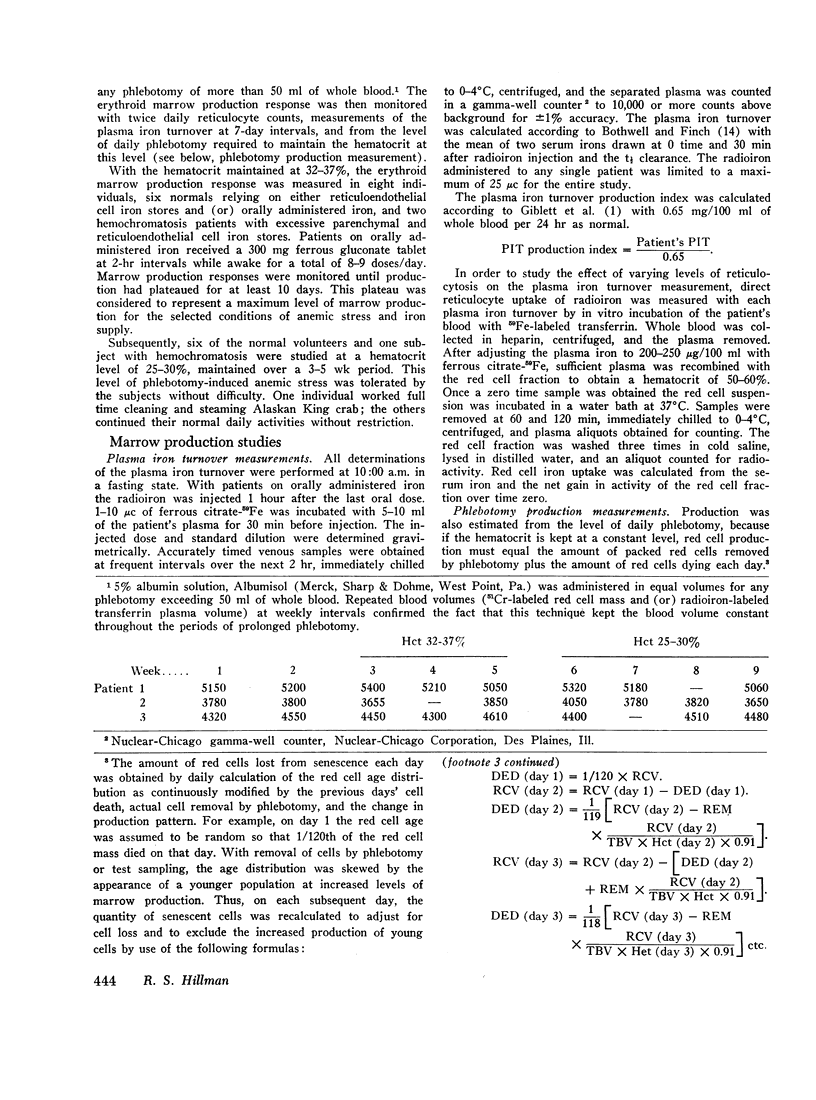
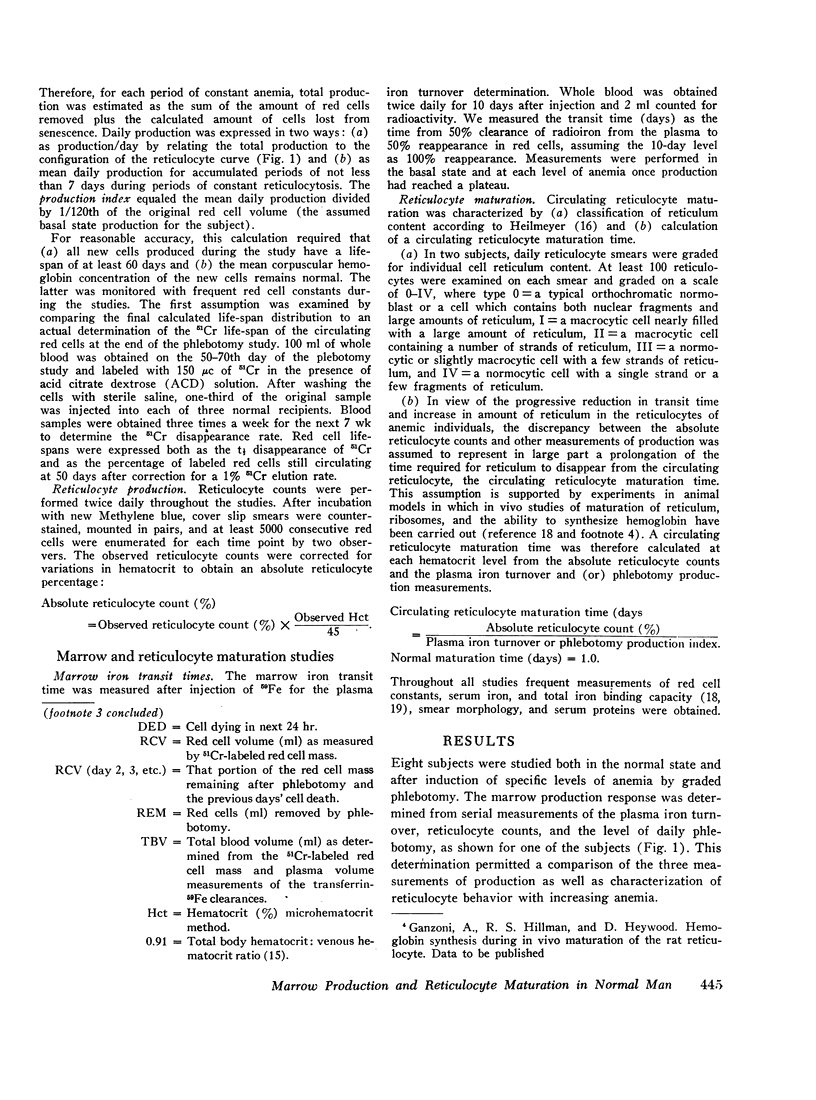
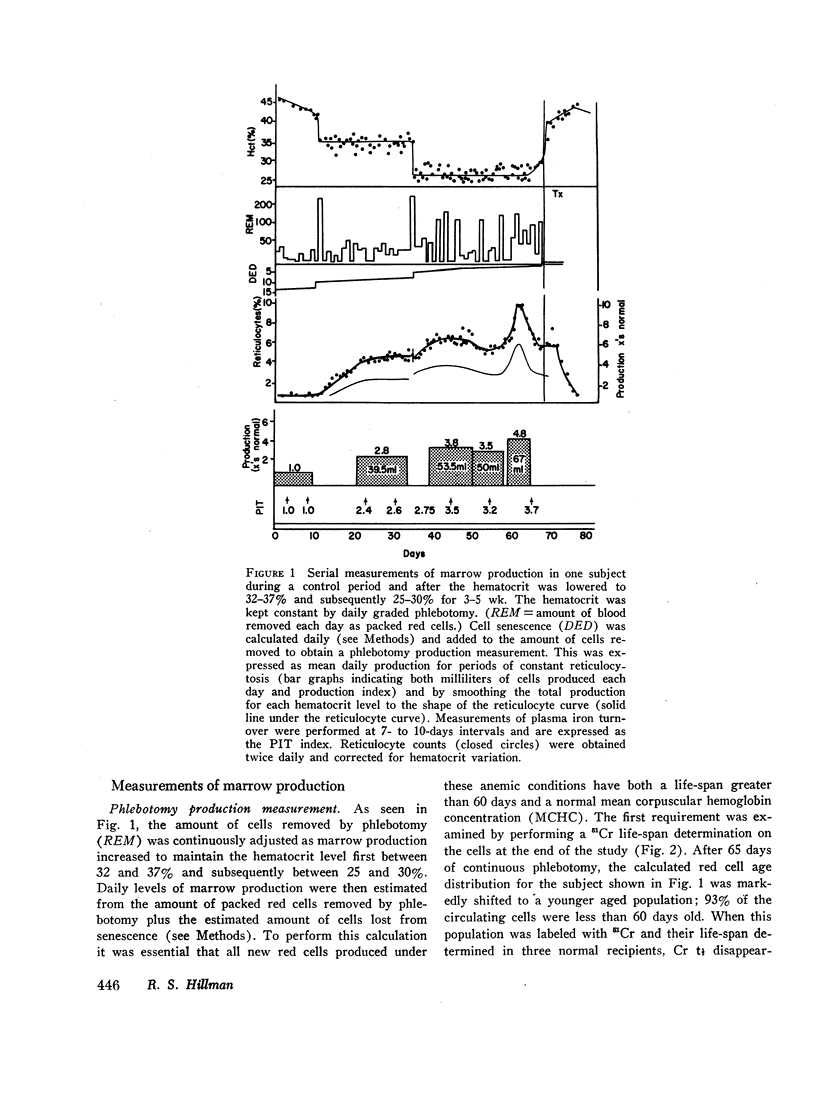
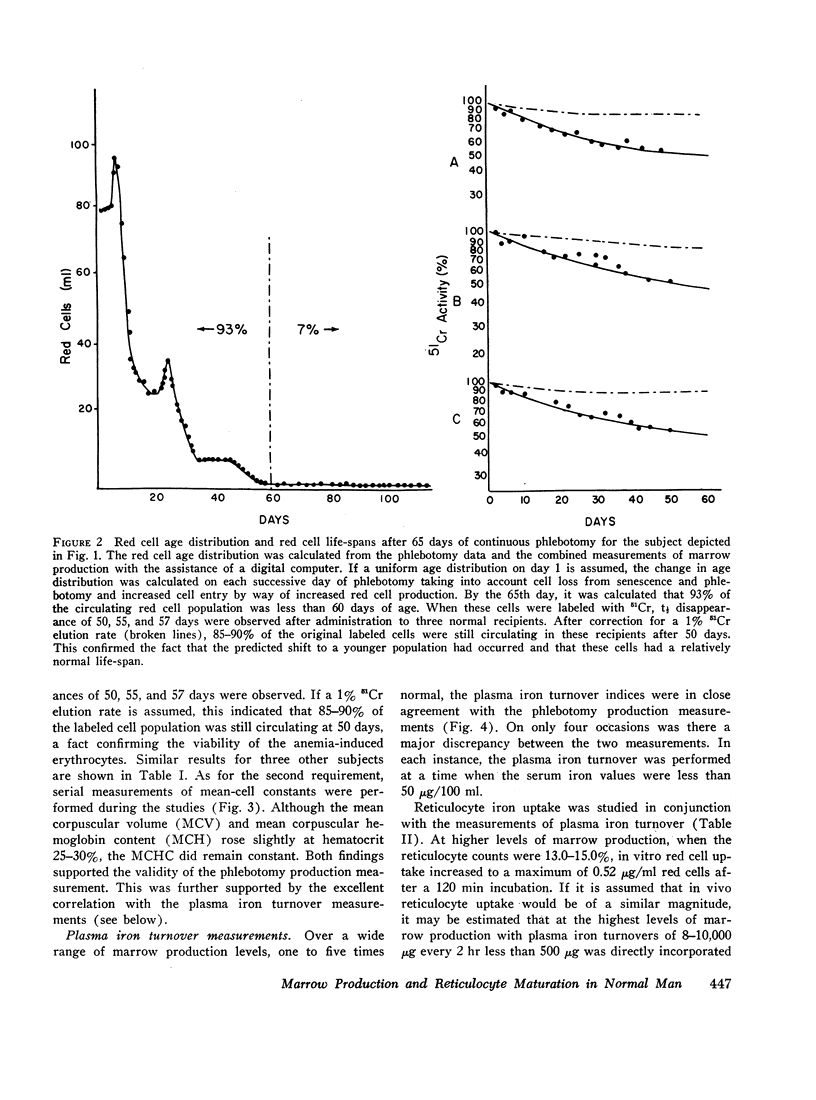
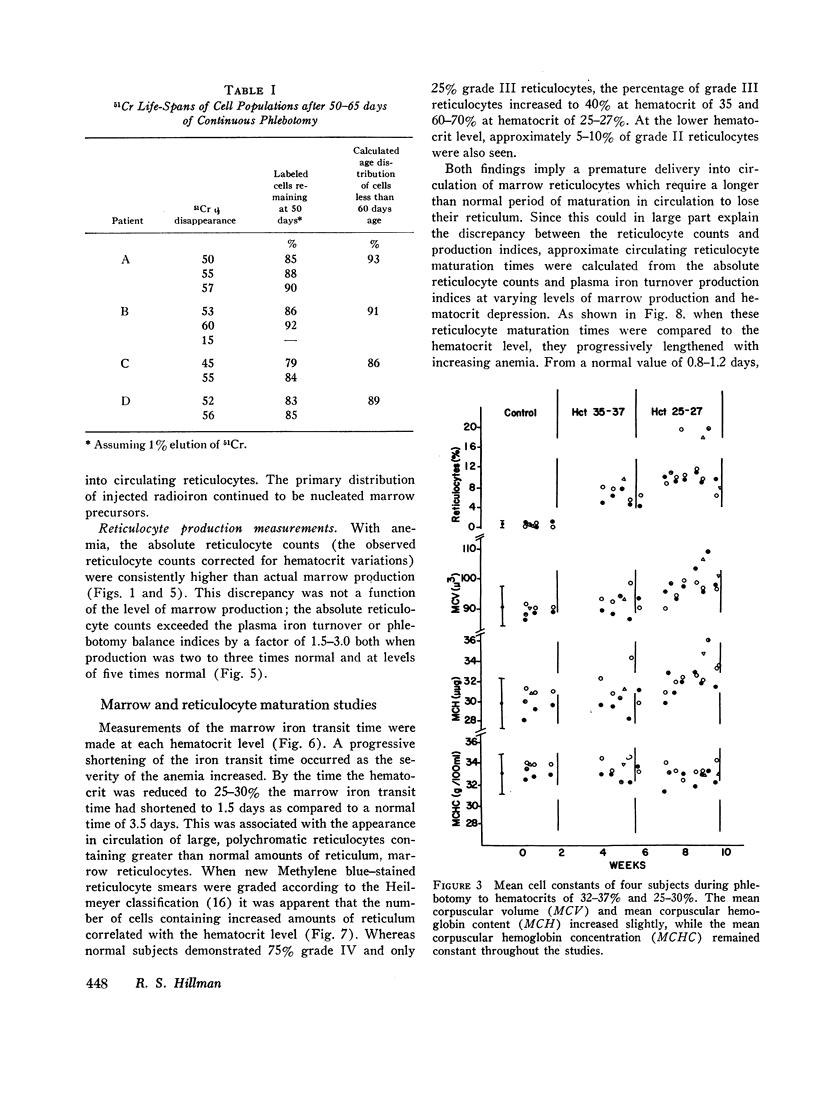
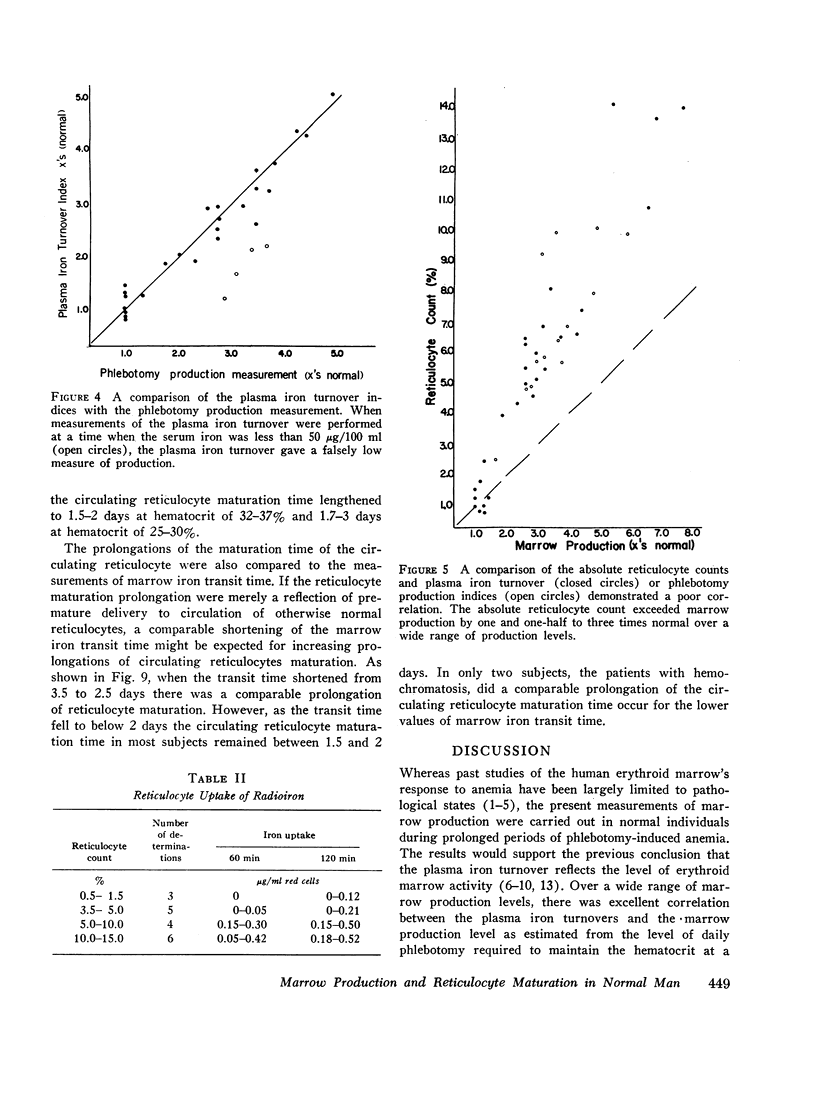
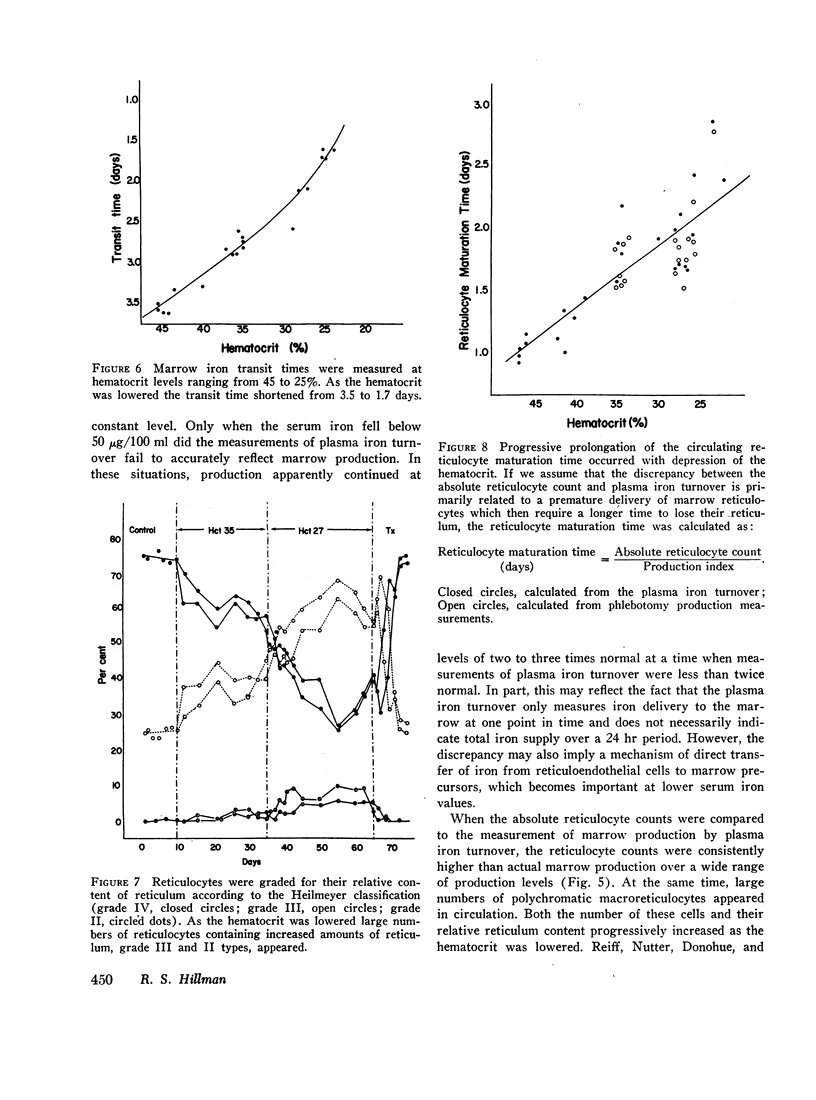
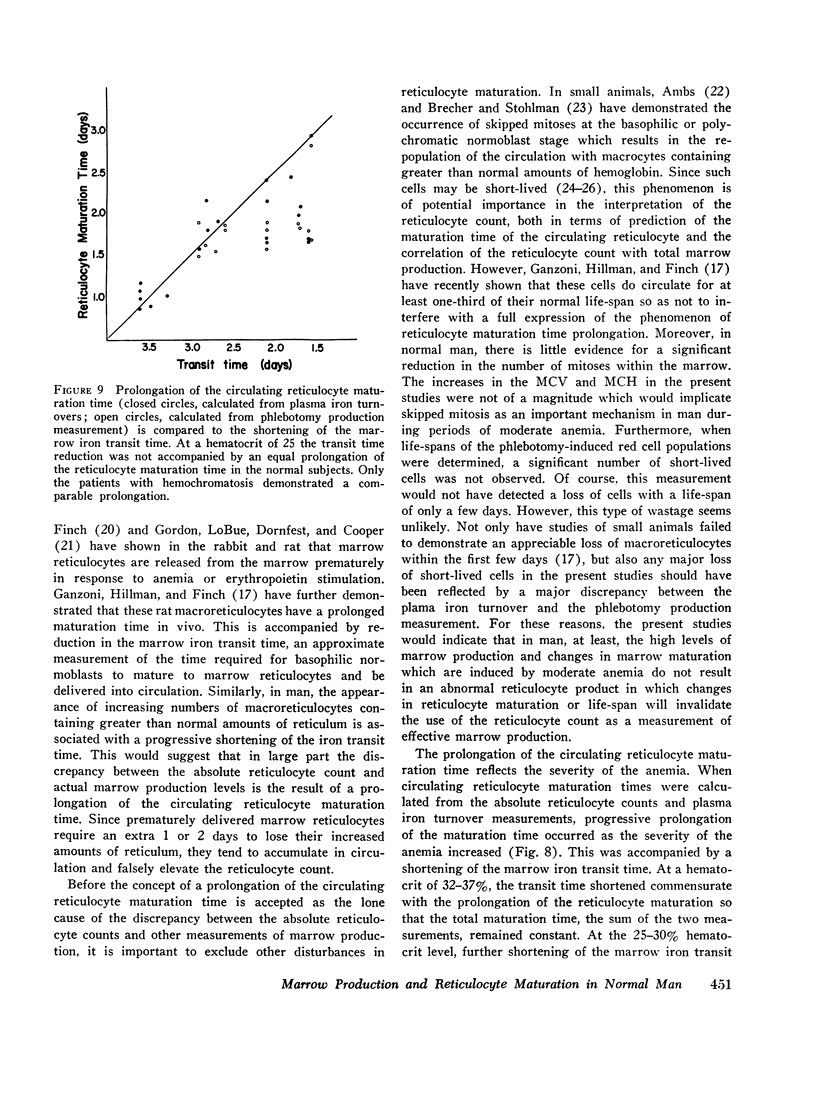
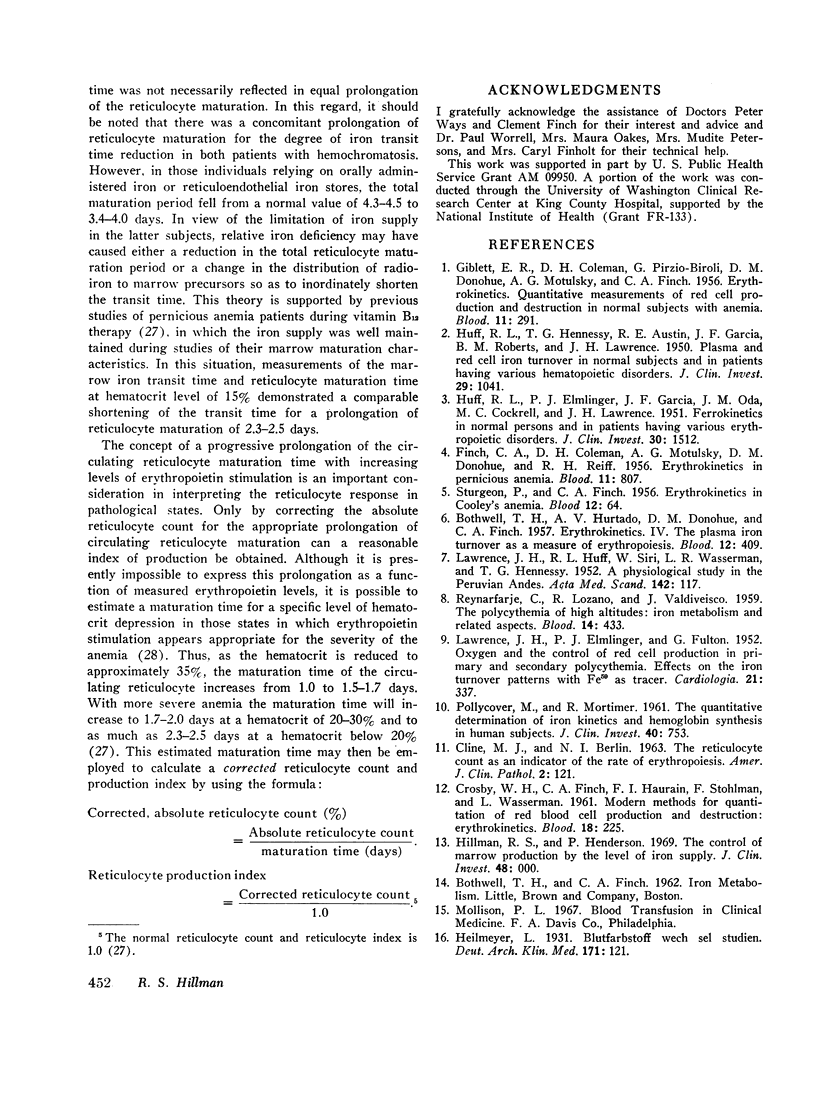
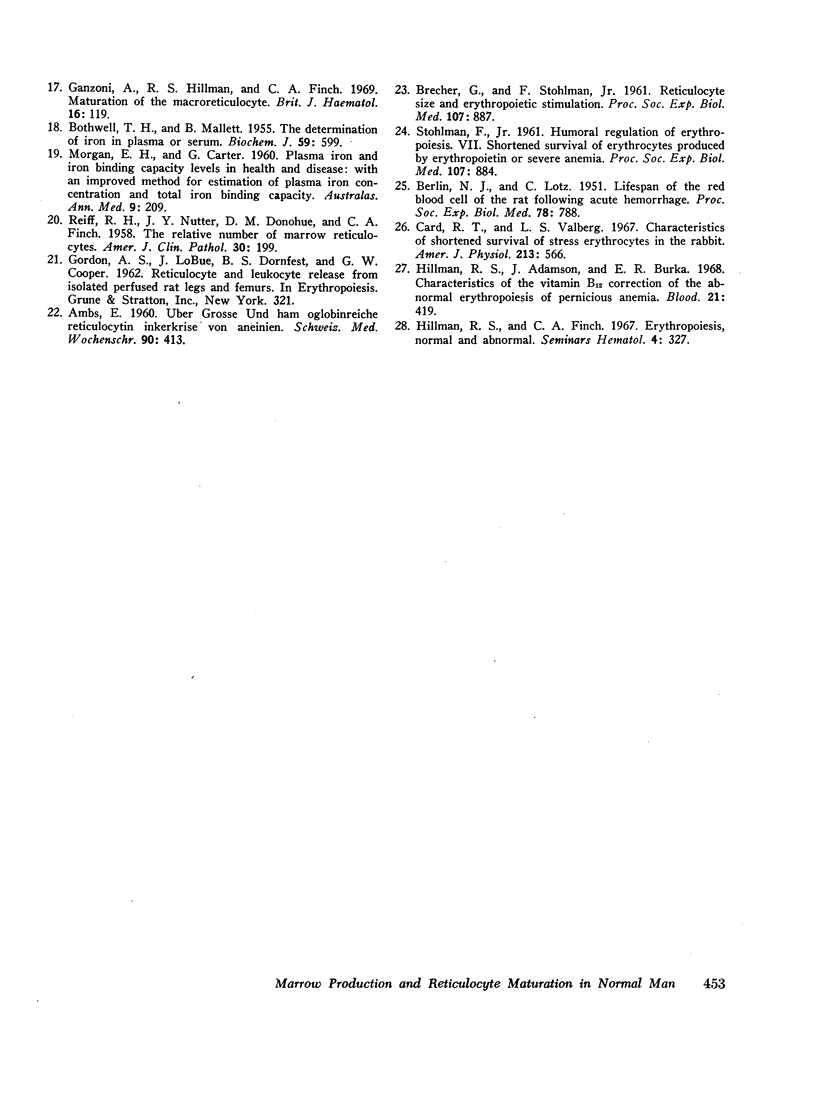
Selected References
These references are in PubMed. This may not be the complete list of references from this article.
- AMBS E. [On large and hemoglobin-rich reticulocytes in crises in anemias]. Schweiz Med Wochenschr. 1960 Apr 9;90:413–419. [PubMed] [Google Scholar]
- BERLIN N. I., LOTZ C. Life span of the red blood cell of the rat following acute hemorrhage. Proc Soc Exp Biol Med. 1951 Dec;78(3):788–790. doi: 10.3181/00379727-78-19220. [DOI] [PubMed] [Google Scholar]
- BOTHWELL T. H., HURTADO A. V., DONOHUE D. M., FINCH C. A. Erythrokinetics. IV. The plasma iron turnover as a measure of erythropoiesis. Blood. 1957 May;12(5):409–427. [PubMed] [Google Scholar]
- BOTHWELL T. H., MALLETT B. The determination of iron in plasma or serum. Biochem J. 1955 Apr;59(4):599–602. doi: 10.1042/bj0590599. [DOI] [PMC free article] [PubMed] [Google Scholar]
- BRECHER G., STOHLMAN F., Jr Reticulocyte size and erythropoietic stimulation. Proc Soc Exp Biol Med. 1961 Aug-Sep;107:887–891. doi: 10.3181/00379727-107-26785. [DOI] [PubMed] [Google Scholar]
- CLINE M. J., BERLIN N. I. The reticulocyte count as an indicator of the rate of erythropoiesis. Am J Clin Pathol. 1963 Feb;39:121–128. doi: 10.1093/ajcp/39.2.121. [DOI] [PubMed] [Google Scholar]
- COLEMAN D. H., DONOHUE D. M., FINCH C. A., MOTULSKY A. G., REIFF R. H. Erythrokinetics in pernicious anemia. Blood. 1956 Sep;11(9):807–820. [PubMed] [Google Scholar]
- Card R. T., Valberg L. S. Characteristics of shortened survival of stress erythrocytes in the rabbit. Am J Physiol. 1967 Sep;213(3):566–572. doi: 10.1152/ajplegacy.1967.213.3.566. [DOI] [PubMed] [Google Scholar]
- FINCH C. A., STURGEON P. Erythrokinetics in Cooley's anemia. Blood. 1957 Jan;12(1):64–73. [PubMed] [Google Scholar]
- GIBLETT E. R., COLEMAN D. H., PIRZIOBIROLI G., DONOHUE D. M., MOTULSKY A. G., FINCH C. A. Erythrokinetics: quantitative measurements of red cell production and destruction in normal subjects and patients with anemia. Blood. 1956 Apr;11(4):291–309. [PubMed] [Google Scholar]
- Ganzoni A., Hillman R. S., Finch C. A. Maturation of the macroreticulocyte. Br J Haematol. 1969 Jan-Feb;16(1):119–135. doi: 10.1111/j.1365-2141.1969.tb00384.x. [DOI] [PubMed] [Google Scholar]
- HUFF R. L., ELMLINGER P. J., GARCIA J. F., ODA J. M., COCKRELL M. C., LAWRENCE J. H. Ferrokinetics in normal persons and in patients having various erythropoietic disorders. J Clin Invest. 1951 Dec;30(122):1512–1526. doi: 10.1172/JCI102562. [DOI] [PMC free article] [PubMed] [Google Scholar]
- HUFF R. L., HENNESSY T. G., AUSTIN R. E., GARCIA J. F., ROBERTS B. M., LAWRENCE J. H. Plasma and red cell iron turnover in normal subjects and in patients having various hematopoietic disorders. J Clin Invest. 1950 Aug;29(8):1041–1052. doi: 10.1172/JCI102335. [DOI] [PMC free article] [PubMed] [Google Scholar]
- Hillman R. S., Adamson J., Burka E. Characteristics of vitamin B12 correction of the abnormal erythropoiesis of pernicious anemia. Blood. 1968 Apr;31(4):419–432. [PubMed] [Google Scholar]
- Hillman R. S., Finch C. A. Erythropoiesis: normal and abnormal. Semin Hematol. 1967 Oct;4(4):327–336. [PubMed] [Google Scholar]
- LAWRENCE J. H., ELMLINGER P. J., FULTON G. Oxygen and the control of red cell production in primary and secondary polycythemia; effects on the iron turnover patterns with Fe59 as tracer. Cardiologia. 1952;21(4):337–346. doi: 10.1159/000165213. [DOI] [PubMed] [Google Scholar]
- LAWRENCE J. H., HUFF R. L., SIRI W., WASSERMAN L. R., HENNESSY T. G. A physiological study in the Peruvian Andes. Acta Med Scand. 1952 Feb 23;142(2):117–131. doi: 10.1111/j.0954-6820.1952.tb13851.x. [DOI] [PubMed] [Google Scholar]
- MORGAN E. H., CARTER G. Plasma iron and iron-binding capacity levels in health and disease: with an improved method for the estimation of plasma iron concentration and total iron-binding capacity. Australas Ann Med. 1960 Aug;9:209–213. doi: 10.1111/imj.1960.9.3.209. [DOI] [PubMed] [Google Scholar]
- POLLYCOVE M., MORTIMER R. The quantitative determination of iron kinetics and hemoglobin synthesis in human subjects. J Clin Invest. 1961 May;40:753–782. doi: 10.1172/JCI104310. [DOI] [PMC free article] [PubMed] [Google Scholar]
- REIFF R. H., NUTTER J. Y., DONOHUE D. M., FINCH C. A. The relative number of marrow reticulocytes. Am J Clin Pathol. 1958 Sep;30(3):199–203. doi: 10.1093/ajcp/30.3.199. [DOI] [PubMed] [Google Scholar]
- REYNAFARJE C., LOZANO R., VALDIVIESO J. The polycythemia of high altitudes: iron metabolism and related aspects. Blood. 1959 Apr;14(4):433–455. [PubMed] [Google Scholar]
- STOHLMAN F., Jr Humoral regulation of erythropoiesis. VII. Shortened survival of erythrocytes produced by erythropoietine or severe anemia. Proc Soc Exp Biol Med. 1961 Aug-Sep;107:884–887. doi: 10.3181/00379727-107-26784. [DOI] [PubMed] [Google Scholar]


